If you search on Google for fat loss diets, you will find lots of results, the problem is, will you find the ideal diet for you?
Is there a diet that suits everyone?
Or do you have different needs than your colleague next door?
The truth is, The most important factor for the success of a diet is that it is adapted to you, and that's what doesn't exist in the generic diets you find on the internet.
Furthermore, diet is only part of the equation and therefore, we must also take into account weight training and cardio, and finally, supplementation.
So, what will you find here?
A guide that will help you build your own diet, help you with cardiovascular and bodybuilding training, and show you which supplements you can choose for this goal.
This is not a guide that you can read in 2 minutes, it is long, so it is only worth reading if you want to REALLY lose fat effectively.
Goals
What is the first step when looking to lose fat?
No, it's not signing up to the gym.
It’s about defining your goals.
It's not enough to say that you want to lose weight, you must concretely define EXACTLY what you want. Whether it's losing 5kg, 10kg or getting visible abs.
You must define a concrete, final and realistic objective.
In addition to defining the objective, you must set a deadline for achieving it.
Why should you set a deadline?
?A goal without a timeline is just a dream.? ? Robert Herjavec
You don't need to put on the wall of your room that on June 5th at 4pm you will be 10kg less than today, but you must have a tangible date to reach your goal, that is It will make you commit and take the plan seriously.
Losing weight is not only physical, but also mental. You have to really WANT to lose weight to be successful, it has to be essential for you, you have to take this process seriously.
Example.
Antonio. I want to lose 2.5kg by the end of this month, this is my goal and I will achieve it.
José. I want to see if I lose some weight?
Who do you think will be more successful?
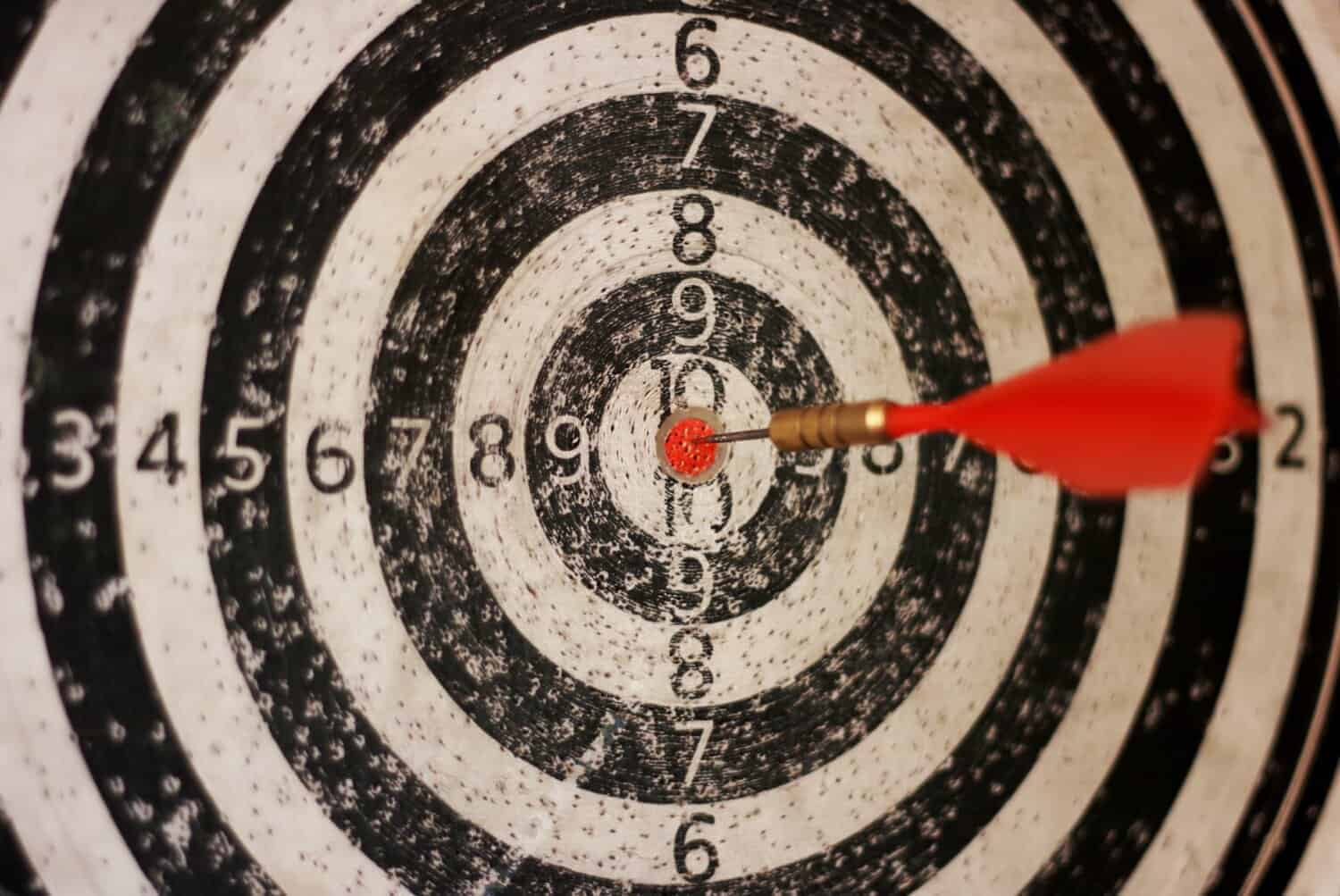
Evolution
The evolution of a weight loss program is very different from that of a muscle mass gain program.
Why?
Progress in a weight loss program is much faster than progress for those looking to gain muscle mass.
It is faster to burn 1kg of fat than to gain 1kg of muscle mass.
It is important to have an idea of the pace at which weight loss occurs, to make sure we are moving in the right direction.
It is possible to lose 15kg in a few weeks, but is that what we are looking for?
No.
What we are looking for is to lose fat quickly while maintaining as much muscle mass as possible.
Therefore, although it is possible to lose 15kg in a few weeks, this would lead to a very high loss of muscle mass, and that is not what we want.
So what pace should we aim to achieve?
Something between 0.5kg and 1kg per week will be a good pace.
You will probably be closer to 1kg at the beginning of the plan, while later on the pace will be closer to 0.5kg. It's normal.
Individual Approach
Why should you have your own diet instead of following your gym partner's?
Because there are too many individual factors that lead to different approaches, especially when it comes to diet.
Pedro, who works in construction, cannot have the same diet as João, who works in an office, sitting for long hours in front of a computer, even if his goals are identical.
Furthermore, someone who finds it easy to lose weight cannot follow the same plan as someone who has always had a tendency to gain weight, can they?
We will organize the construction of the plan by body type, and there are three main ones, they are: Ectomorph, mesomorph and endomorph.
Each body type requires different approaches, both in terms of calories and macronutrients.
Before you know how much and how you should eat, you must know what body type you fit into.
Ectomorph ? Ectomorphs are thin and have a typically narrower body structure, with a small rib cage and narrow shoulders as well. As a rule, this is the body type with the least strength of the three.
One of its main characteristics is the difficulty that ectomorphs have in gaining weight, due to their fast metabolism. This is a disadvantage when the objective is to gain weight and muscle mass, but when you want to lose fat, it is a great advantage.
However, as the endomorph loses weight quickly, he must be careful not to lose muscle mass in the process.
Mesomorph ? Of the three types, we can say that the mesomorph is the one that has the greatest advantage, as it brings together the best characteristics to develop a lean and muscular body.
Mesomorphs usually have an athletic appearance, often even with little training. The shoulders are broad and are normally strong. They gain muscle easily and losing fat is also not a problem for mesomorphs.
Although it has enormous advantages, the mesomorph can also become out of shape, and above all, if the objective is the best possible physical condition, adequate training and diet are important.
Endomorph ? The endomorph can be considered the opposite of the ectomorph. While the ectomorph is thin and thin, the endomorph is heavy, with a wide ribcage and broad shoulders. The endomorph gains muscle easily, but also fat, which makes it difficult for the endomorph to have a low body fat index.
The endomorph is clearly the one with the biggest obstacles when it comes to fat loss, however, it is not impossible to achieve low fat levels.
Furthermore, the endomorph's ability to gain muscle will help him burn fat in the long term.
These are the three main body types that exist, however, it does not mean that you have to identify 100% with one of them.
The most likely thing is that you are a mixture of two, however, there is always a prevalence for one of them, and that is where you should guide yourself when building your plan.
Calories and Macronutrients
The three macronutrients are proteins, carbohydrates and fats.
If you live on planet Earth, you've probably heard of them.
The consumption, and especially the non-consumption, of macronutrients will be decisive for losing fat.
Each one has its role in the body, therefore, it is important to consume them in the correct quantities.
This is where the personalization of the diet begins, with each body type and level of activity having different approaches to macronutrients and different caloric needs.
Calories
Calories for here.
Calories for there.
You've heard about calories, but what exactly are they?
Calories are the units of measurement used to show how much energy a food contains.
Your body burns calories daily, and what happens is:
- If you consume more calories than your body burns/uses, they will be stored as fat.
- If you consume fewer calories than those your body burns/uses, your body will use its energy reserves to meet its daily energy needs, burning fat in the process.
This is the most important thing in the entire process to lose fat.
If you only put one approach into practice from the entire guide, this would undoubtedly be calorie reduction.
Proteins, carbohydrates and fats contain calories.
One gram of protein contains 4 calories.
One gram of carbohydrates contains 4 calories.
One gram of fat contains 9 calories.
Each body type will have different caloric requirements, and we will also take into account each person's level of activity.
Ectomorph? Body weight x 31-32-33 = Number of daily calories
Mesomorph? Body weight x 30-31-32 = Number of daily calories
Endomorph? Body weight x 28-29-30 = Number of daily calories
How will you choose the number to multiply?
Easy.
- If your day is very sedentary, use the first number to multiply by your body weight.
- If your day is moderate, you use the second number to multiply by your body weight.
- If your day is very active, you use the third number to multiply by your body weight.
Don't forget that, as you lose weight, you should adapt the number of daily calories.
It doesn't mean that you need to recalculate calories every time you lose 1kg, but you should recalculate whenever your progress stops, or whenever the weight loss is significant, for example 5kg.
Now that you know how many calories you need daily, you need to know where to get these calories.
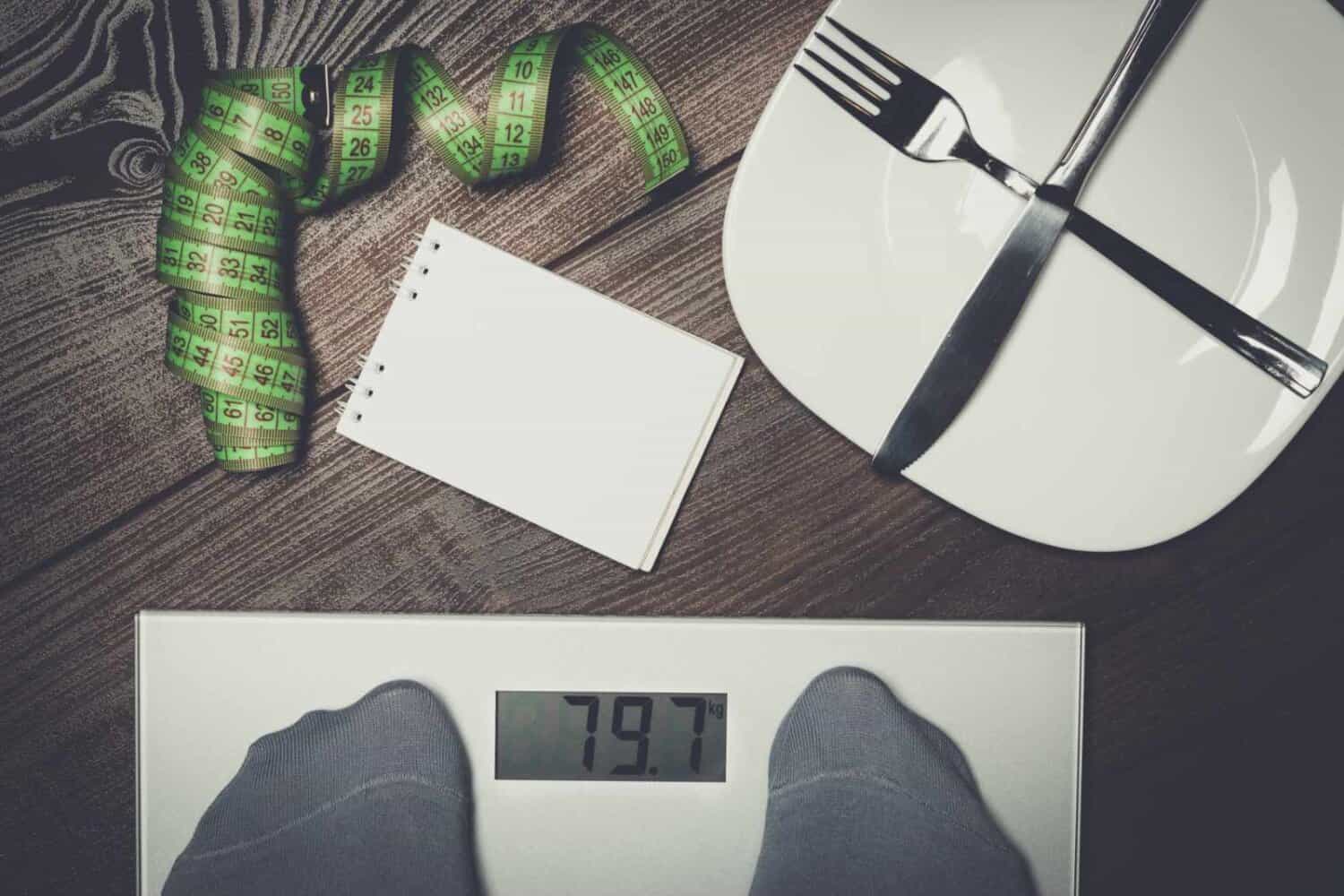
Proteins
Proteins are fundamental molecules for the human body, and are responsible for many functions, the most important of which for our objective will undoubtedly be the building and repairing muscle tissue.
In any weight loss plan, we should aim to burn fat and not muscle, and adequate protein consumption will help make this happen.
The body prefers to store protein as muscle tissue, rather than using it as energy, however, these can be used as an energy source if the body needs it, it is called glycogenesis, and that is what we really want to avoid.
How much protein should I consume?
Protein consumption in this program should be as follows:
Ectomorph ? Body weight x 2.65
Mesomorph ? Body weight x 2.875
Endomorph ? Body weight x 3
Fats
Fats, or lipids, are essential molecules and should not be ignored, even in a fat loss plan.
This macronutrient plays a very important role at a hormonal level, and is essential in the testosterone production process.
Fat is the nutrient with the highest caloric density, that is, while carbohydrates and proteins contain 4 calories per gram, fats contain 9 calories, therefore We must pay attention to its consumption.
You should never eliminate this macronutrient from your diet, but it is undoubtedly the one that you should pay the most attention to, as a small slip in lipid consumption can easily lead to a large increase in calories.
How much fat should I consume?
Ectomorph
Between 45kg and 69kg body weight = 45 to 50 grams of fat per day
Between 70kg and 90kg body weight = 50 to 55 grams of fat per day
More than 90kg body weight = 55 to 60 grams of fat per day
Mesomorph
Between 45kg and 69kg body weight = 40 to 45 grams of fat per day
Between 70kg and 90kg body weight = 45 to 50 grams of fat per day
More than 90kg body weight = 50 to 55 grams of fat per day
Endomorph
Between 45kg and 69kg body weight = 50 to 55 grams of fat per day
Between 70kg and 90kg body weight = 55 to 60 grams of fat per day
More than 90kg body weight = 60 to 65 grams of fat per day
Carbohydrates
When we talk about carbohydrates, we talk about energy, as this is the main function of this nutrient. When you eat carbohydrates, they are either quickly used as energy, or stored as glycogen, to be used later.
When the body has low levels of glycogen, it can begin to use amino acids (muscle) as a source of energy, i.e. carbohydrates can also be considered anti-catabolic. Furthermore, this nutrient plays an important role in the release of insulin.
You shouldn't neglect carbohydrates, as they will give you better workouts and better results, you should use them in the right quantities, and at the best times.
How many carbohydrates should I consume?
Now that you've calculated the amounts of proteins and fats you'll need to consume daily, it's easy to calculate how many carbohydrates you'll need.
All the calories left over after calculating both proteins and fats should be used for carbohydrates.
See how many calories are left to reach your daily calorie requirement and divide this value by 4. This is the amount of carbohydrates you should consume per day.
Choice of food
You already know the amounts of macronutrients you should consume per day, so now let's move on to the foods you should use to reach those same amounts.
First of all, the type of food you eat is much less important than the amounts of food you consume daily.
This means that you can even use the healthiest foods possible, but if you are in excess calories, you will not be successful in your plan.
Proteins
When looking to build and maintain muscle tissue, protein consumption is essential.
The best sources of protein are animal proteins.
These are the main foods that you should use in your diet as a source of protein:
- Chicken and turkey breast
- Fish
- Cottage cheese
- Quark cheese
- Lean cuts of pork and beef
- Eggs
- Protein Supplements
Fats
Fats play several important roles in the body, and therefore, you should not eliminate this macronutrient from your diet.
Some fatty acids are considered essential, because the body cannot produce them, you must consume sources of fat high in essential fatty acids, and You have excellent choices here:
- Fish oil
- Oil
- Linseed oil
- Oil
- Dry fruits
- Peanut or almond butter
- Gems*
- Salmon*
*Egg yolks and salmon are also excellent sources of protein.
Finally, it is important to highlight two fats? Saturated fats and hydrogenated fats.
Although the reputation of saturated fats is not the best, they play an important role in the body, and should not be eliminated from the diet, only ingested in a reduced form in relation to essential fatty acids.
As for hydrogenated fats, they have no role in the human body, and should be completely eliminated from the diet.
Carbohydrates
Carbohydrates are the main source of energy and can be classified into two categories: Complex and simple.
In a simplified way, we can say that complex ones provide a slower, more sustained release of energy, while simple ones cause a rapid spike in blood sugar.
We should prioritize complex carbohydrates in all meals, except in the post-workout shake, where simple carbohydrates can and should be used.
Simple carbohydrates increase insulin levels more markedly compared to complex carbohydrates, being useful after training to reduce cortisol levels and therefore reduce the catabolic effects of training.
Here are the best carbohydrate choices:
- Rice and whole grain pasta
- Sweet potato
- Oat
- Vegetables
- Whole grain bread
- Beans
- Fruit
- Dextrose (simple)
- Maltodextrin (simple)
Once again, these foods are the best and most nutritious choices, however, it doesn't mean that you can't include other foods that aren't here, it just means that these should be the basis of your diet.
Finally, Don't forget to include a good dose of vegetables in your diet, such as broccoli. Vegetables offer large amounts of vitamins, minerals and fiber for a healthy and effective diet.
When to eat?
We have already seen so far that the most important point for the success of a fat loss diet are calories.
Then we have the distribution of macronutrients, the choice of foods, and now we move on to the next level: the most important times to eat your meals.
There are 5 important times of the day to eat your meals, 3 of which can be considered crucial.
Breakfast
We start with breakfast, your first meal of the day and one of the 5 main meals you should have.
You shouldn't skip breakfast, especially when the aim is to sleep a few more minutes, and the consequence is to eat a croissant at the cafe closest to your work.
If you want the best possible results, you shouldn't make this mistake.
By consuming a breakfast rich in protein, you will have greater satiety and therefore, you will reduce the possibility of making mistakes in your diet. (Link)
Furthermore, after eight hours or more without eating any food, your body will thank you for a good dose of protein.
Pre workout
The pre-workout meal is one of those considered crucial, since this is what will serve as ?fuel? for your training.
The act of training alone is quite catabolic, being the most catabolic moment of the day, which is why a good meal here is very important.
You should consume a meal consisting of carbohydrates and proteins before training, to have energy and provide the amino acids that the body needs to get the best performance from training.
This meal should be eaten between 1.5 and 3 hours before training.
Post-workout shake
Even with a good pre-workout meal, the secretion of catabolic hormones during training is inevitable, Therefore, this is another crucial moment in which you must provide your body with key nutrients.
Cortisol levels remain high after training, and they will remain high if you don't do anything to lower them.
The best way to reduce cortisol and quickly start promoting anabolism is by combining protein and simple carbohydrates after training.
The best meal you can have right after training is a quick-assimilation protein shake, together with simple carbohydrates.
This will provide the amino acids necessary for muscle building and will cause a marked insulin release.
Insulin is a cortisol antagonist, that is, when insulin levels are high, cortisol levels are low, and vice versa.
Furthermore, insulin is an extremely anabolic hormone, which promotes protein synthesis and nutrient absorption.
Post-workout meal
The third crucial meal that you cannot skip is the post-workout meal.
After training, you should drink a quick-absorbing shake and also simple carbohydrates, to quickly lower cortisol levels and quickly promote muscle growth. However, as this shake is fast-acting, it will not maintain protein synthesis at high levels for long. You should therefore consume a solid meal within 1 to 2 hours after training.
This meal should consist of proteins and complex carbohydrates.
Before bedtime
Finally, Another important time to have a meal is before bed.
This is another valuable time to eat a protein-rich meal, which will provide a flow of amino acids during sleep, and thus promote muscle recovery.(Link)
The ideal option for this meal will be an intake of slowly absorbed proteins., such as cottage cheese, quark cheese or a casein supplement. This will allow for a steady flow of amino acids throughout the night.
Another interesting nutrient to add to this meal is fat.
Fats will delay the absorption of proteins, which is perfect before bed.
As for carbohydrates before bed, it's not as negative as many people make it seem.
Imagine that your daily carbohydrate consumption is 250g, and before bed you still have 30g left to reach this value, there is no problem in ingesting these 30g before bed.
No, they will not be instantly converted to fat.
Organize the plan
You already know the amounts of macronutrients, and you already know the most important times to ingest them.
What is missing now?
Know the quantities you should use per meal.
Proteins
You should ideally divide the total amount of protein by the number of meals you eat per day.
In other words, if you eat 5 meals a day, take the total amount of protein you should consume daily, and divide it by 5.
Example. If you need to consume 200g of protein per day and you eat 5 meals, divide that 200g by 5, that is, you will consume on average 40g per meal.
Carbohydrates
Unlike proteins, you should be more careful when consuming carbohydrates, as they cause a pronounced release of insulin, and you should take advantage of this hormone, not be harmed by it.
The three main times when you should consume carbohydrates are the pre-workout meal, the post-workout shake and the post-workout meal.
You should distribute the carbohydrates in this way:
35% of carbohydrates in the pre-workout meal
20% of carbohydrates in the post-workout shake
25% of carbohydrates in the post-workout meal
If you add these values together, you come to the conclusion that there are still 20% of this nutrient remaining. You should consume these 20% whenever you prefer.
If you like to make a big breakfast, you can choose to put them in your breakfast. You can also divide these 20% between two meals, the choice is yours.
Fats
The only time of the day when you should really avoid consuming fats is after training, as fats will delay the absorption of these meals, and after training that is not what we are looking for.
In the rest of your meals, there is no problem with adding this macronutrient.
You can spread your fat intake over several meals, or you can concentrate it on two or three specific meals.
A good time to consume fats is before bed, as they will delay the absorption of this meal, which is positive when you won't eat for several hours.
High carbohydrate days
If you've ever been on a fat loss diet, you know how these programs usually work.
First the weight comes off quickly and easily, then it takes longer, until you reach a stage where little or nothing happens, progress stagnates.
Why does this happen?
The body's main concern is survival. When you go through long periods in which you provide your body with less energy than it needs, it assumes that the supply is scarce, and therefore adapts to reduce energy consumption.
Basically it's like driving a car, with only 20km of fuel left, but you don't know when and where you'll find another fuel station. It could even be 2km away, or it could be 50km away, you simply don't have that information.
And what do you do in this situation?
You reduce your speed, try to save fuel, as you don't know when you can refuel, and at the risk of running out of fuel and the car stopping, you reduce consumption.
It's the same thing that happens with the human body, when it finds itself with little "fuel", it starts to save. It reduces leptin levels and lowers energy consumption, in order to lower the rate at which you burn your energy reserves, that is, fats.
Leptin is one of the main fat-burning hormones, and when we have low levels of this hormone, we are unlikely to be successful in our weight loss program.
One way to keep leptin levels high is through high carbohydrate consumption days.
How much to use?
The amount of carbohydrates you should use on these days depends largely on your body type. The increase should be between 55% and 155% of the amount you regularly ingest.
If your body type is ectomorph, then you should be closer to 150%.
If, on the other hand, you have a slower metabolism and consider yourself an endomorph, you will want to stay closer to 50%.
Finally, the mesomorph should be at an increase of 100%.
For example, José is an endomorph with a slow metabolism, and normally consumes 200 grams of carbohydrates per day.
An increase of 55% means he should eat 310g on the high carb day.
These carbohydrates must be distributed throughout the day as on a normal day.
Furthermore, this increase in carbohydrate levels means that you will eat more calories on this day than on the rest, which will not only help you hormonally, but will also help you “recharge your batteries”.
You can use these days as a rest day to help with recovery, or you can use them during your heaviest workout of the week, such as leg training.
Frequency of high days in HC
It is important to introduce these high carb days into your plan, however, they should not be too frequent, as this would harm your fat loss plan.
The frequency of these days will once again be different from person A to person B.
More than 10% of body fat
Ectomorph? once every 7-8 days
Mesomorph? once every 8-9 days
Endomorph? once every 9-10 days
Less than 10% body fat
Ectomorph? once every 4-6 days
Mesomorph? once every 5-7 days
Endomorph? once every 6-7 days
Cardiovascular Training
Now that you have your eating plan organized and ready to put into practice, it's time to move on to the training part.
Let's start by addressing cardio training.
HIIT training
HIIT training is training performed in high-intensity intervals, combined with low-intensity intervals, or rest.
An example of a HIIT workout:
You do a sprint, that is, you make your maximum effort for a short period of time, for example 30 seconds, and then rest for 1 minute.
This cycle is repeated several times.
The biggest benefits of HIIT training are a greater use of fat, in the period after training, compared to any other type of cardio, i.e. even after training is over, metabolism remains high, burning calories and fat more quickly.
Afterwards, the time spent on this type of cardio is much less compared to common low-intensity cardio.
Furthermore, this training method is much more motivating than spending ages on a treadmill.
The biggest disadvantage of HIIT training is that it cannot be performed many times during the week, especially during a low-calorie diet.
This type of training is very demanding not only on a physical level, but also on a mental level. For this reason, you should only do two HIIT training sessions per week, for periods of 10 to 20 minutes per session.
These workouts should be done on days without weight training.
Start by doing just 10 minutes, and gradually increase it as you progress.
You can use the type of cardio exercise you prefer, from running, to elliptical or cycling.
Find more information about HIIT training here.
MISS training
MISS training is medium intensity and medium duration training. Since we are going to limit ourselves to two HIIT training sessions per week, we are going to complement the plan with this type of cardio, which is less taxing not only physically, but also mentally, and it will allow us to burn some extra calories.
This type of training must be carried out with moderate intensity, and its duration, as we have already seen, must also be moderate. As with HIIT training, cardio exercise is indifferent, choose the one you like to do the most, or alternate.
Unlike HIIT, in this type of cardio training, the intensity must be maintained consistently throughout the entire session. If you can't maintain the same pace throughout your workout, you should reduce the intensity in the next session.
And what is moderate intensity?
Something between 65% and 70% of your maximum heart rate. It's the kind of intensity high enough to make you sweat, but moderate enough that you can talk while you exercise.
The training duration should never exceed 35 minutes, with 20 to 35 minutes being the ideal duration.
How many MISS training sessions per week?
We already know that HIIT training should be done twice a week, now, as for MISS training, the number is not so certain.
You should add MISS training sessions as necessary, that is, if you see that two HIIT training sessions are not bringing you the results you are looking for, add one or two MISS training sessions per week.
Start with just one or two sessions per week, and increase to a maximum of four sessions.
At first you won't need to add this type of training more than once or twice a week, as the diet and the rest of the plan will give you good results.
You should use this type of training as a weapon for when progress starts to slow down.
Bodybuilding Training
Strength training is essential, even when the goal is to lose fat. Not only do you burn calories during weight training, but having a higher percentage of muscle mass will lead you to burn more calories on a daily basis.
Don't make the mistake of prioritizing cardiovascular training and leaving weight training to the background.
It is important to make the distinction between losing weight and losing fat, as they are not always the same thing.
If you only focus on cardio training and neglect weight training, you will undoubtedly lose weight and fat, the problem is that you will also lose a lot of muscle mass.
If, on the other hand, you focus on weight training in conjunction with cardio training, you probably won't lose as much weight in the short term as the person who forgets weight training, as they will also lose a lot of weight resulting from the loss of muscle mass. , however, in the medium and long term you will burn more fat and achieve a much more aesthetic physique.
Type of training
Bodybuilding training is essential in this process, you know that now, what type of training should you do?
Let's start by dispelling the biggest myth that exists in relation to weight training applied to fat loss.
High reps and light weights?
No.
You should not use high repetitions and light weights to achieve greater fat burning. If you are coming from a training plan to gain muscle mass, you can continue the same training with weights that you were already doing. What can happen in the medium-long term is a small drop in loads, naturally, due to lower caloric consumption.
Repetitions should be between 6 and 12 per exercise, never below this number, as the risk of injury is greater in fat loss plans.
The best approach will be to use compound and heavy exercises, training each part of the body 1 to 2 times a week, without neglecting any muscle. (Yes, legs are muscles too, be sure to train them.)
Abs workout
Those looking to lose fat usually want to have defined abs, which is why we see many people doing Olympic series of abdominal exercises daily.
Is this how you get the famous sixpack?
Difficultly.
First of all, abdominal training will not burn fat in the belly area. In other words, if this area has a lot of fat, there is no abdominal training that will work miracles.
What will give you abs will be a good diet, followed consistently, with cardio and weight training.
Now, this doesn't mean you don't need to train abs.
The abdominals, like all other muscles, must be worked to achieve the best possible results. You should train them with specific exercises once or twice a week. Strength training with compound exercises, cardio training and diet together with abdominal training will give you the desired sixpack.
Supplementation
Finally, let's look at the supplements you can use to help you with your fat loss program.
Whey Protein
Whey protein is the basic supplement for gym athletes, and can also be a great help when the goal is to lose weight.
The benefits of protein are obvious, and whey protein is one of the best sources of this macronutrient.
It will help you maintain your lean mass while losing fat and, due to its rapid absorption, it is your best bet after an intense workout.
Furthermore, you can use this supplement to increase the protein content of your meals, and more easily meet your daily protein needs.
To learn more about whey protein supplements, find here our guide with all the information you need.
If you don't know which whey supplement you should buy, try going through our analysis zone.
Fish oil/Fish Oil
Fish oil supplementation has immense benefits, many beyond simple weight loss. Fish oil is made up of two fatty acids called EPA and DHA, that is, omega-3.
Our diet tends to consist of a huge amount of omega-6 and much smaller doses of omega-3, which will create a negative imbalance.
Some of the benefits of omega-3 are:
- Helps reduce body fat (Link)
- Reduces inflammation (Reduced risk of injury)
- Increases insulin sensitivity
- Improves cardiovascular health
Not only does it optimize fat loss, it plays a fundamental role in health.
You find Omega-3 available here.
Caffeine
Caffeine supplementation also brings benefits when the aim is to lose fat.
We can classify two major benefits of caffeine supplementation, the increase in thermogenesis(Link) and increased energy.
With the increase in thermogenesis we will have a higher fat burning rate, in other words, you will burn more fat than you would without caffeine in the same period of time.
Regarding the energy aspect, by ingesting caffeine before training, you can achieve greater performance, due to the greater energy and alertness provided by caffeine.
Note. It is best not to abuse caffeine, and not to use it whenever you are tired, as caffeine loses its effect with prolonged use and increased dosage.
Don't confuse a lack of will with a lack of energy.
You can find caffeine in pill form here, or simply use coffee.
5-HTP
If you have difficulty controlling your appetite, this is an interesting supplement that can help you.
Unlike caffeine, which increases thermogenesis, 5-HTP has a more indirect action on fat loss, as it will lead to weight loss through reduced food consumption.
When you follow low-calorie diets, tryptophan levels drop, and consequently, serotonin levels also drop, as tryptophan is the amino acid precursor to serotonin.
Low levels of serotonin lead to the famous “cravings”, that huge desire to eat sweets, making it more difficult to stick to your plan.
Supplementation with 5-HTP leads to an increase in serotonin levels, and consequently alleviates this problem, leading to greater satiety. (Link 1 It is Link 2)
If your problem with fat loss diets is hunger, this is an interesting supplement to try.
You find 5-HTP available here.
These are just some of the interesting supplements you can include in your plan.
One type of supplement you could expect to find here would be so-called fat-burners.
And why aren't they here?
Because they are supplements that often contain more harmful ingredients than beneficial ones, without studies proving their effectiveness and sometimes their safety.
Of course there are exceptions, but you will be well served with the supplements we recommend here.
Extra
Record the loads you use in each workout, and the number of repetitions and sets.
As you reduce calories and weight, the tendency will be to reduce loads and ease into training, often without realizing it. This simply happens because you have less energy and get tired more easily.
By writing down the loads, repetitions and sets you use in each workout, it will be easier to maintain the intensity of the previous workout in the next workout.
You can also record your cardio times to make sure you're not regressing.
Don't limit yourself to measuring progress using the scale
There are many ways to measure progress when your goal is to lose fat, however, the one you place the most faith in is usually the scale.
Don't limit yourself to evaluating your progress using the scale, the mirror counts too.
Don't limit yourself to evaluating your progress in the mirror, you often make mistakes and become demotivated.
The ideal is to combine more than one assessment method.
If in front of the mirror you look the same, but the scale says you are 1kg less than last week, you have made progress.
If the scale says you weigh the same, but in the mirror you appear thinner and have more definition, you may have gained muscle mass and lost fat mass, you have made progress.
Another way to evaluate your progress that you can easily add to these two methods is through measurement.
Measure your arms, waist, hips and both legs. Add these numbers together and write them down on a piece of paper. When this number drops, it's a sign that you've made progress.
Another simple method is to take weekly photos in front of the mirror. It is important to always take photos at the same time of day and with the same lighting.
This leaves you with 4 simple assessment methods, which will allow you to better measure your progress. When you feel unmotivated, look at the photos you took since the beginning of the plan, for example, and see how much you've progressed.
Don't follow all the advice they give you
Nowadays, everyone has a say when it comes to losing fat, whether it's about training or diet.
Furthermore, nowadays everyone is a PT, especially online.
There are several approaches to losing fat effectively, but there are two common denominators in all of them: Consistency and calorie deficit.
These are the two rules that all weight loss diets follow, and that make up the majority of the results.
The secret to achieving good results is to be consistent. Don't jump from plan to plan weekly, or change your diet every other day just because you read a new article.
You don't need to be a genius to gain or lose weight, nor do you need the latest in science to achieve it.
What is needed?
Consistency and work.
?We are what we do repeatedly.? ? Aristotle
This article was based on the Muscle&Strength guide that you can find here.
If you have any questions or suggestions, use the comments area below.

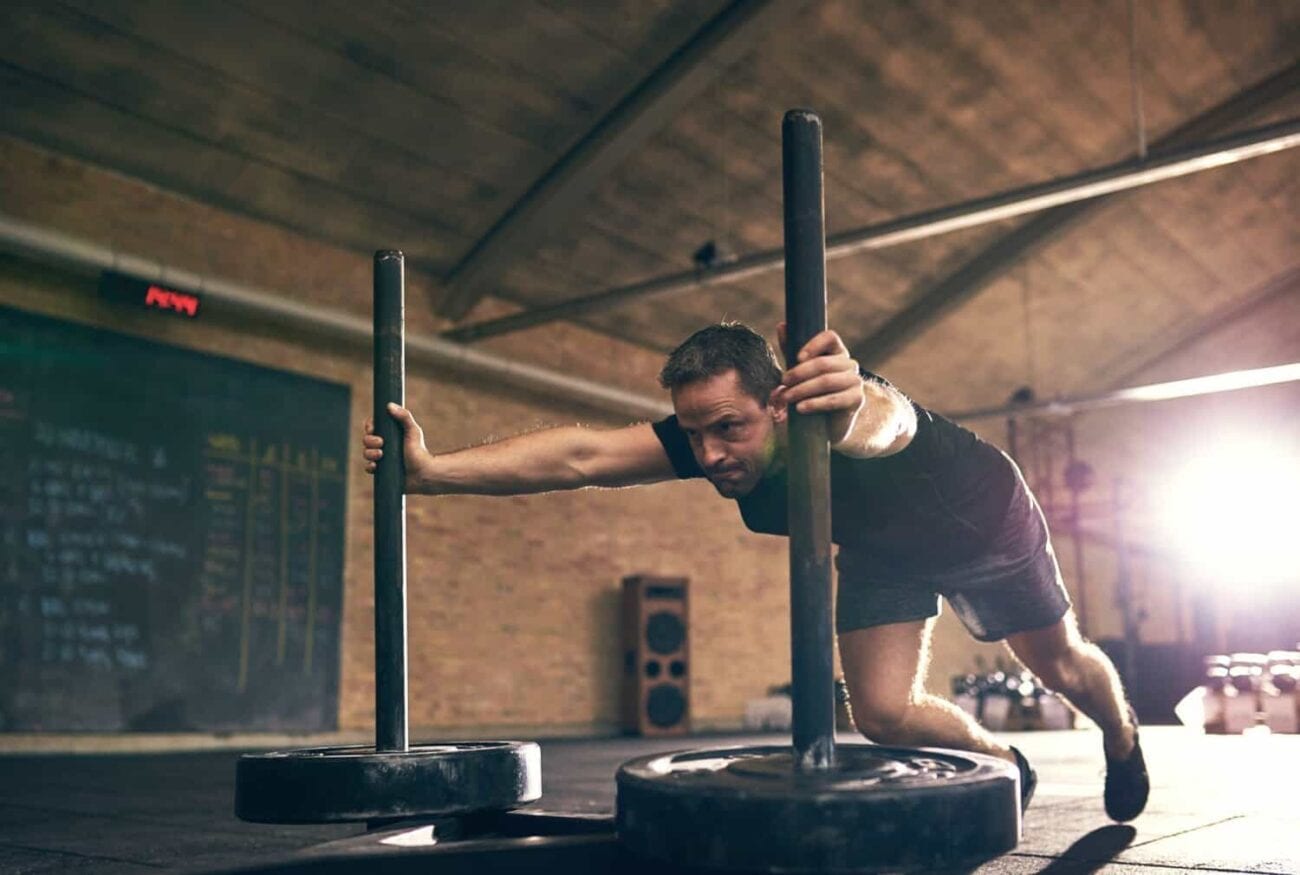
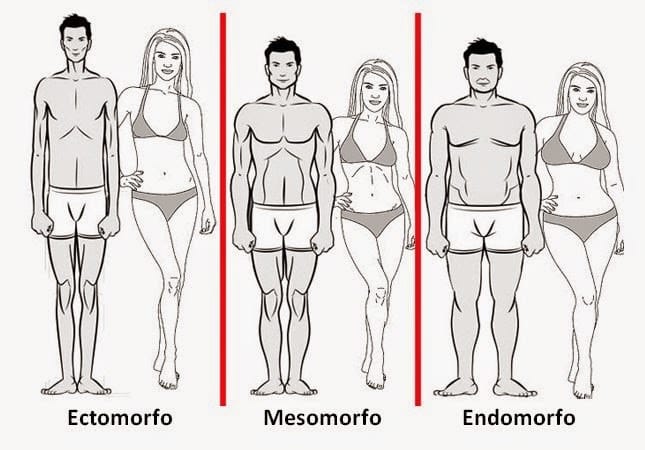
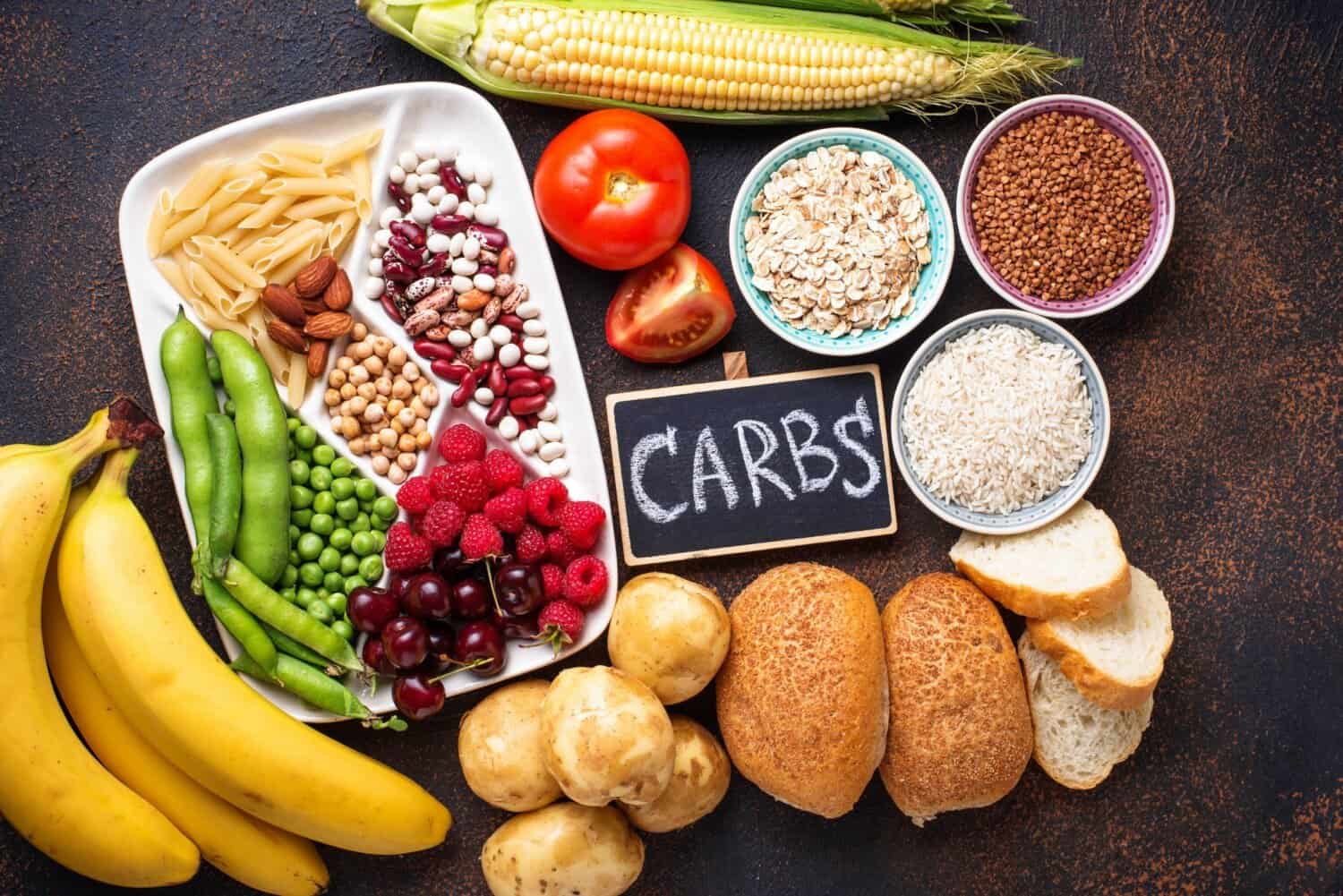
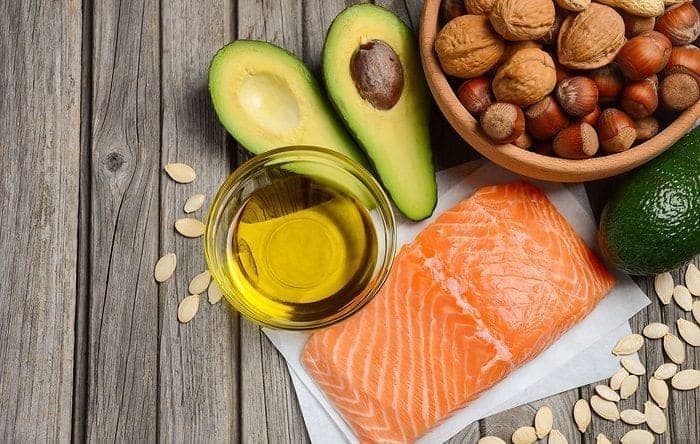


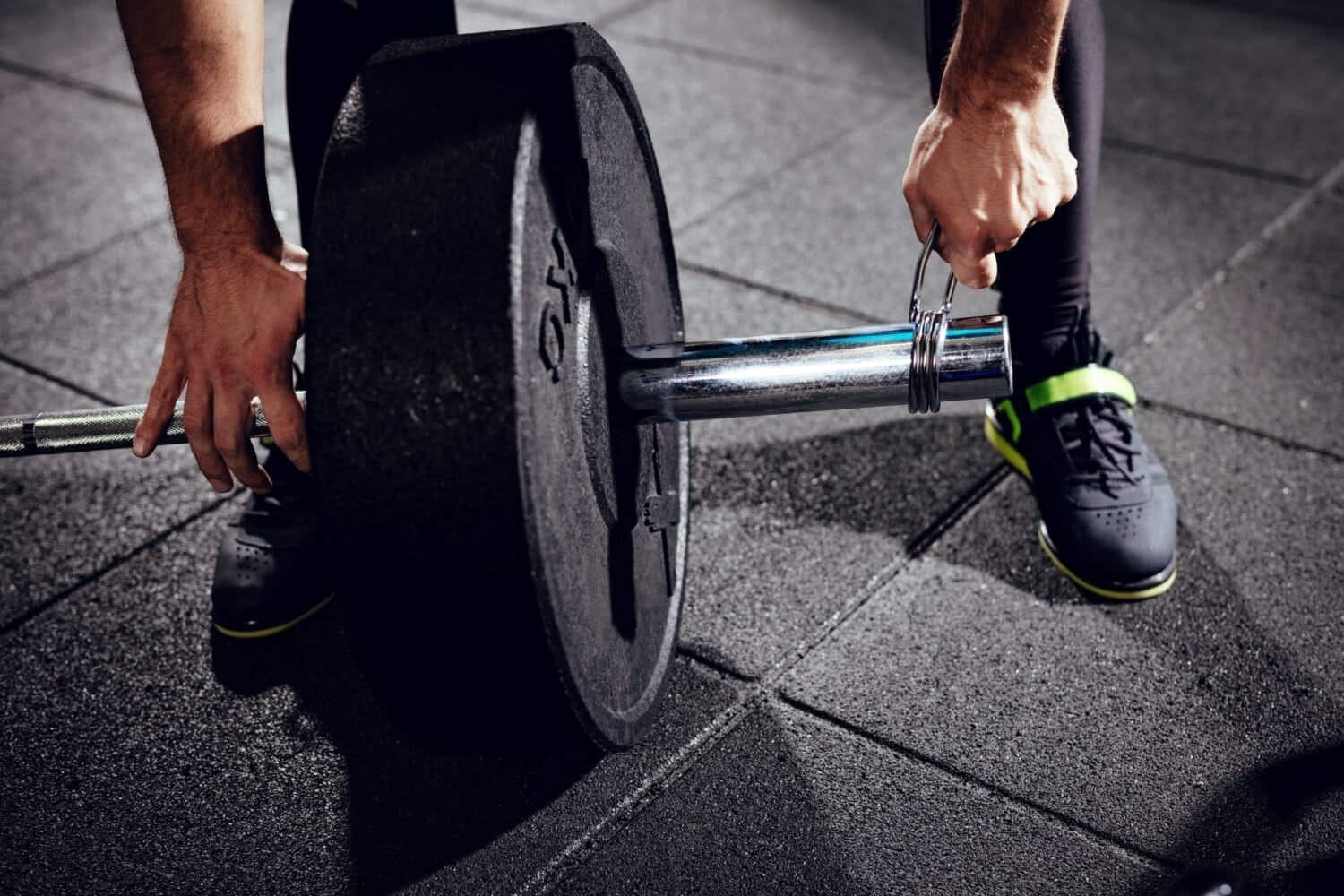


The article is very good, I think the variable for the female audience is missing, the daily calories needed are not the same. Right?
Most likely we will also create a specific article for female audiences ;)
Very interesting article! Did you create one for the female audience? I wanted to recommend it to my girlfriend. :-)
Hi Alan, unfortunately it hasn't been possible yet.
Very good article, I'll try to follow the tips and see the results...
When they say we should consume 25% of carbohydrates in the pre-workout meal…
If I train at 7:30 pm and have already had lunch many hours ago, the pre-workout meal is a snack, right? This means that I would have to consume 80% of my carbohydrates from snacks…
Yes, but you can adjust if it doesn't suit you, these are just general values.
Excellent article.
I go to the gym at lunchtime and take protein right after training, but I eat lunch 30 minutes later.
Will it make sense or should I take protein at another time?
Thanks
Thank you Nuno.
You can take it, or you can not take it.
The important thing is to meet your protein needs at the end of the day, whether with or without a post-workout shake.
Why the need to create a plan for the female audience? This seems to me to apply to both men and women. What would be the difference?
Basically the entire plan can actually be applied to women, as long as the calorie calculation is changed.
See this article: https://ginasiovirtual.mystagingwebsite.com/quantas-calorias-ingerir-para-perder-peso/
:)
Super article! The way they interconnect subjects and use clear and objective speech is really very useful. Thanks for all the help! I'm a regular follower and I recommend it.
Thank you Helena :)